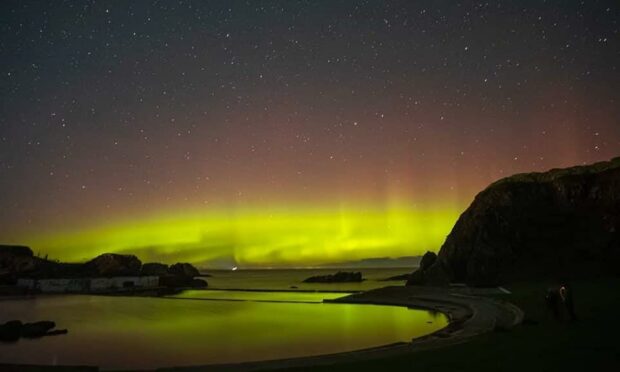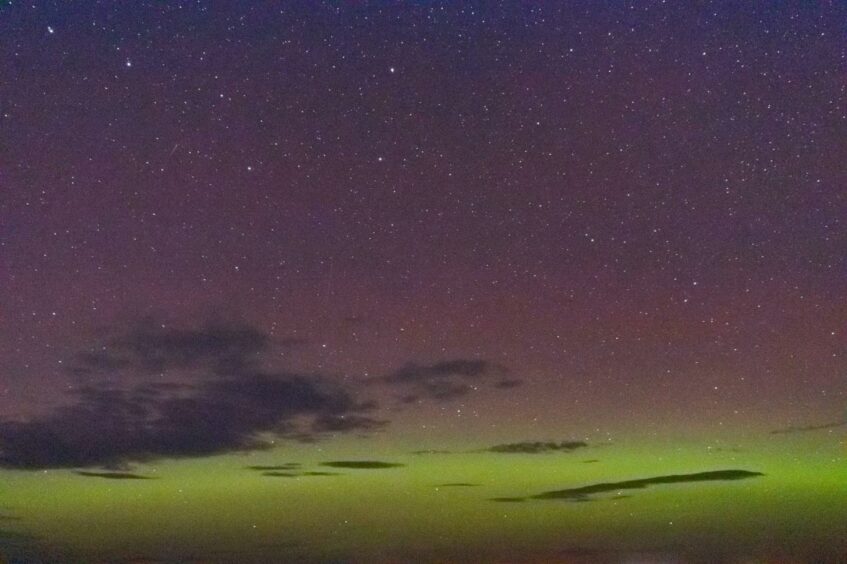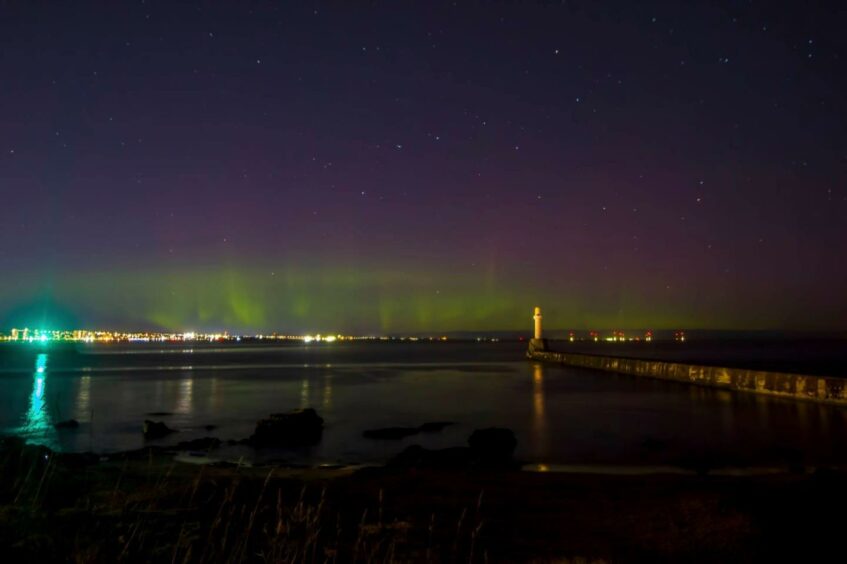The Northern Lights are a natural wonder that have fascinated people for thousands of years – but what are they and where can they be seen in Scotland?
The Aurora Borealis light up the skies in a stunning display of colours leaving stargazers amazed.
Aurora is the name given to the light emitted when particles emitted by the sun react with the Earth’s magnetic field and atmosphere.
Charged particles are whisked towards the planet’s north and south poles by the magnetic field’s loops, which is why they are less common the closer you get to the equator.
Aurora Borealis is the name given to this phenomenon in the north – the equivalent in the southern hemisphere is called the Aurora Australis.
It comes in all different colours, shapes and patterns, setting the night sky alive.
The colours depend on the different types of gas particles and can range from greens, blues and purples to fiery reds and oranges.
The streaks of colour change constantly and can last minutes or merely seconds, making them even more difficult to spot at times.
Can you see the Northern Lights in Scotland?
Although the Northern Lights are often associated with Nordic countries like Iceland and Norway, they can be seen from parts of Scotland.
Northern Scotland lies at the same latitude as Stavanger in Norway and Nunivak Island in Alaska. This means those in the north of the country have a good chance of spotting the “merry dancers”.
The light show can be seen more often from the north coast of Scotland and the islands.
It can also be enjoyed from parts of the mainland, including the north-east and other areas of the Highlands.
However, the aurora can be seen anywhere in Scotland when the right conditions are met and where light pollution is at a minimum.
When it comes to the weather, the best conditions to view the lights are when the sky is dark and clear of any clouds.
Ideally, the lights will be best viewed in remote areas, facing the northern horizon – with north-facing coasts producing some of the best viewing locations.
Best places to see the Aurora Borealis in Scotland
People can get a good view of the aurora from Orkney, Shetland, the Western Isles, and even the northern tip of Skye.
In Moray, the natural phenomenon can be seen from the coastline which faces north across the dark sea at night.
Dunnottar Castle and Cairn O’Mount have been known to have good views of the aurora in the past.
There is also a good chance of spotting it from the Torry Battery and other areas along the coast of Aberdeen.
It has also been known to be visible from Ullapool and areas across the Cairngorms.
On the evening of October 30 into the early hours of October 31, the Aurora Borealis could be seen clearly from spots across the north and north-east of Scotland.
Those in lower altitude areas of the north and north-east and along the Aberdeenshire and Moray coast had the best chance of seeing the Northern Lights.
People gathered at spots along the Aberdeenshire and Moray coast to look to the sky for the Northern Lights with some managing to capture the display.
Tips for photographing the Northern Lights
Here is a step-by-step guide showing how to capture the stunning display using a camera.
- Deactivate the camera flash and automatic settings.
- Focus manually to infinity.
- Open up the lens aperture.
- Compose your shot.
- The bigger the imaging chip in it, the less grainy the pictures will be.
- Manual focus adjustment is a must.
- Don’t forget – memory cards and spare batteries.
Do they happen every night?
The Northern Lights can occur throughout the year, but the best time to see them is in autumn and winter.
This is because these months have longer periods of darkness and clear nights are more frequent. The nights need to be cold and clear of clouds.
In spring and summer, the evenings are too light to see the spectacular displays of purple and green streaked across the night skies.
The Glendale App tracks and forecasts when the aurora can be seen.


